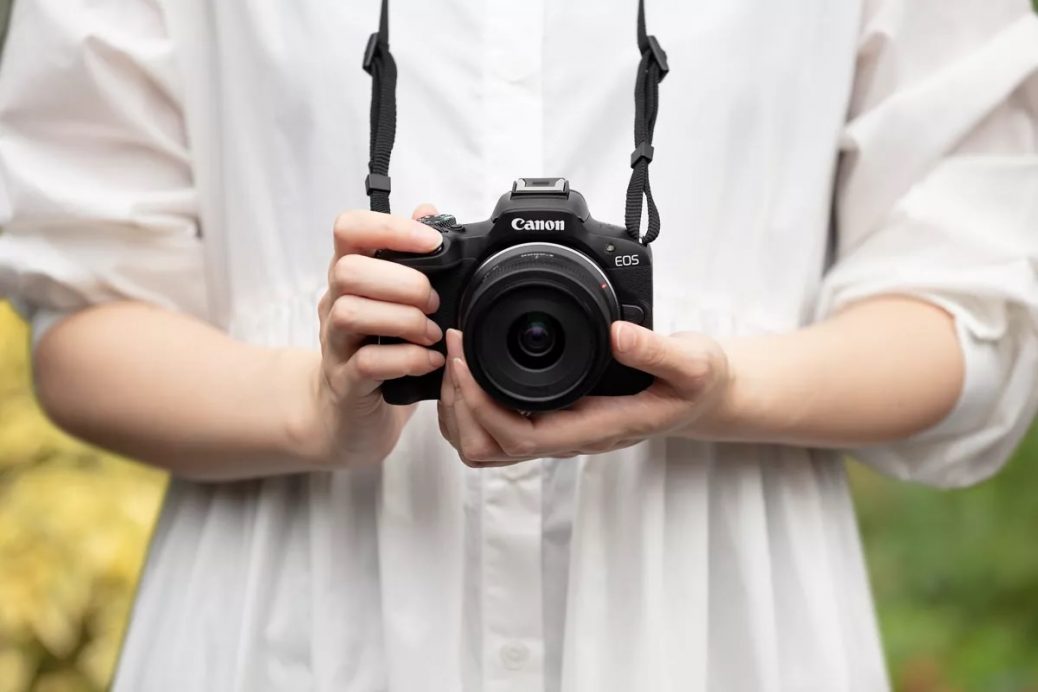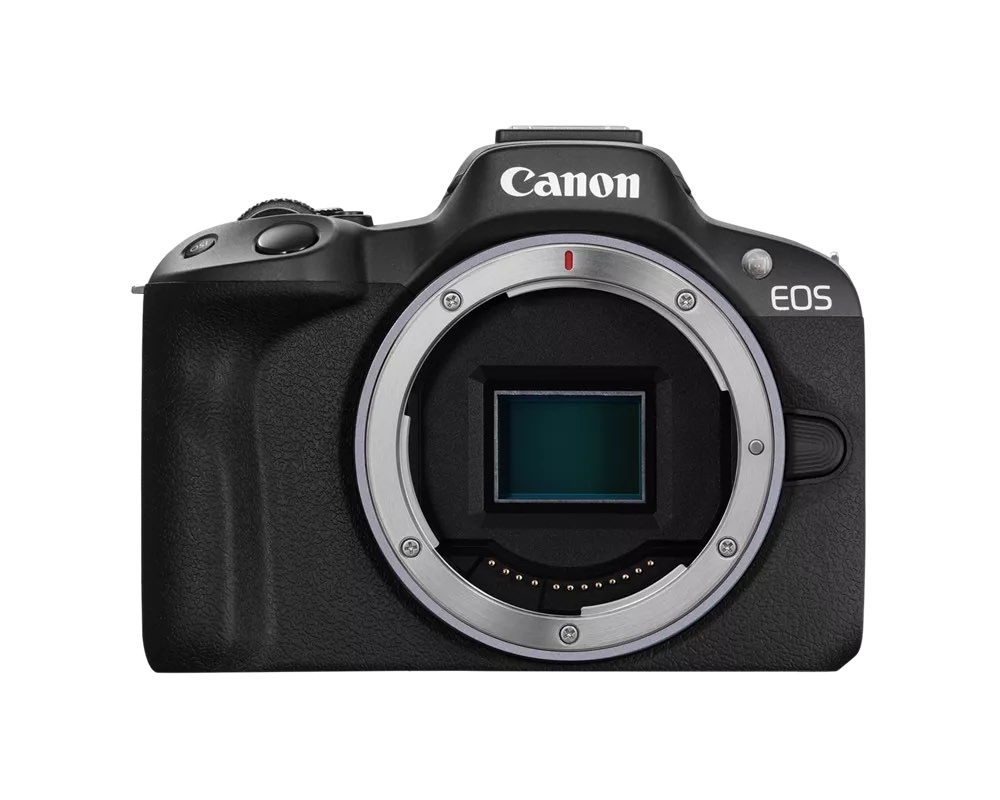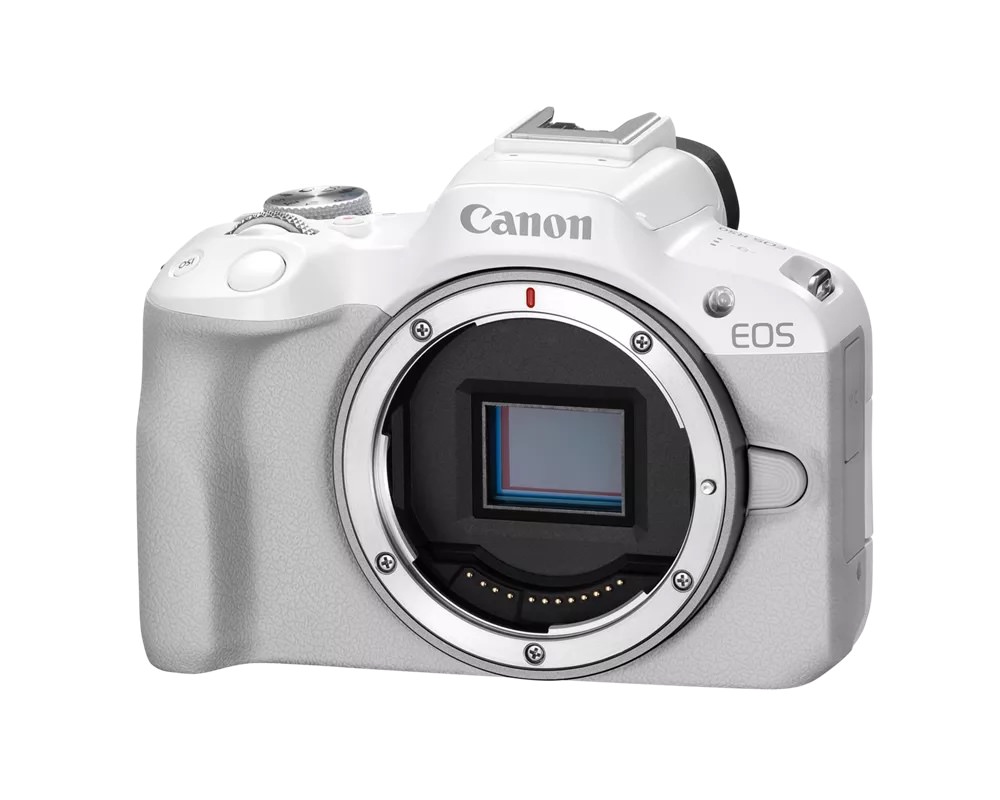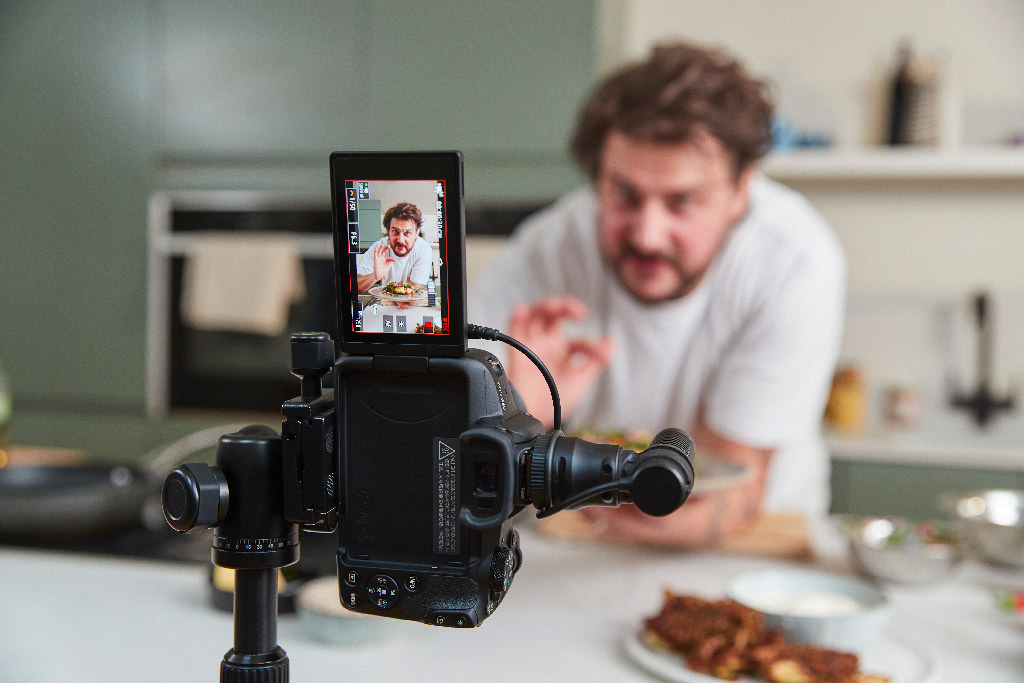The EOS R50 is an APS-C Camera for Content Creators
In order to migrate the EOS M50 II series to RF, Canon has developed the Canon EOS R50, a small and lightweight camera. The Canon EOS R50 is around the same size as the Canon M50 and M50 Mark II, which it is expected to replace due to the usage of the company’s now-standard RF mount lenses.
Canon introduced its first APS-C mirrorless cameras, the EOS R7 and EOS R10, in May 2022, along with two ASP-C kit zoom lenses, the RF-S 18-45mm f/4.5-6.3 IS STM and RF-S 18-150mm f/3.5-6.3 IS STM. While the EOS R7 and R10 remain gateway cameras into the EOS R mirrorless ecosystem, the Japanese manufacturer has something even more intuitive in the pipeline. The EOS R50 is designed for content makers who want to upgrade from a smartphone to a mirrorless camera.
The camera features a 24.2MP APS-C sensor, enhanced subject identification technology similar to that featured in the Canon R6 Mark II and the new Canon R8, and the company’s latest DIGIC X engine. The R50 now has amazing autofocus capabilities because of the new AI-driven subject identification.
In addition to RAW and C-RAW, the R50 can record in JPEG and HEIF formats. The R50 has a maximum burst rate of 28 photos in big JPEG mode with an electronic shutter (at 15 frames per second) and 42 shots in electronic first curtain shutter mode (at 12 frames per second).
The R50 features an OLED viewfinder with 2.36 million dots and a magnification of.96x. The touch-controllable LCD screen is a TFT color liquid crystal panel with 1.62 million dots.
The R50 does not have a full mechanical shutter; instead, it has an electronic front curtain shutter and an electronic shutter. The R50 also lacks in-body image stabilization, therefore, it will rely on optical image-stabilized lenses to eliminate shake.
The angle of the 3-inch touchscreen display may be adjusted when shooting in selfie mode to better view the image and control camera settings. Canon claims that the camera was developed with first-time users in mind, which is why they decided to provide additional advanced automated modes.
The Creative Assist and Creative Bracketing modes are among them: the former automatically adjusts settings based on the shooting environment, while the latter provides different look possibilities for each shot image.
The 6K sensor is used to make oversampled UHD 4K videos that can be recorded at up to 30fps (4K60p is available on the EOS R10 and R7, respectively with and without crop).
The Canon EOS R50 will be available in either black or white in early spring for $680.




